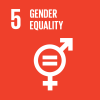FOUND 3 RESULTS
A recent blog by UN Women presents analysis and lessons from the 2018 monitoring round for SDG Indicator 5.c.1, shedding light on government efforts to design and implement gender budget tracking systems. Data from 69 countries show that despite global progress in adopting gender budgeting, gaps persist in the implementation of policies and laws on gender equality and women’s empowerment. Less than half of the reporting countries indicated having adequate resource allocations...
The 2019 review and redesign of the Gender Responsive Results-Based Budgeting Report (RBG), more commonly referred to as the "Gender Report," in Morocco has led to a series of recommendations for 2020. With support from UN Women Morocco, the review set out to strengthen GR content to ensure it is a strategic accountability tool for monitoring and evaluating public policies from a gender perspective. It focused on assessing the contribution of the GR to the implementation and monitoring of GRB in Morocco, as well as challenges, including the lack of joint ownership of GRB by ministerial departments and the limited use of sector-specific gender analyses. Starting next year, the Gender Report (GR) will be more standardized to make it easier for users to access and provide information. This will include a clearer drafting framework for contributing line ministries and alignment with a new analytical approach.
Sustainable Development Goal (SDG) Indicator 5.c.1 “Proportion of countries with systems to track and make public allocations for gender equality and women’s empowerment” has been recently reclassified as Tier II by the Inter-Agency Expert Group on SDGs. The indicator measures progress towards Target 5c of the SDGs to “adopt and strengthen sound policies and enforceable legislation for the promotion of gender equality and the empowerment of all women and girls at all levels”. It links the policy and legal requirements for gender equality with resource allocations for their implementation. By tracking resource allocations, governments introduce deliberate measures into the planning and budgeting cycle to meet their gender policy objectives such as eliminating gender based violence or increasing women’s employment. By making these allocations public, governments commit to higher levels of transparency and accountability in budget decision making.


